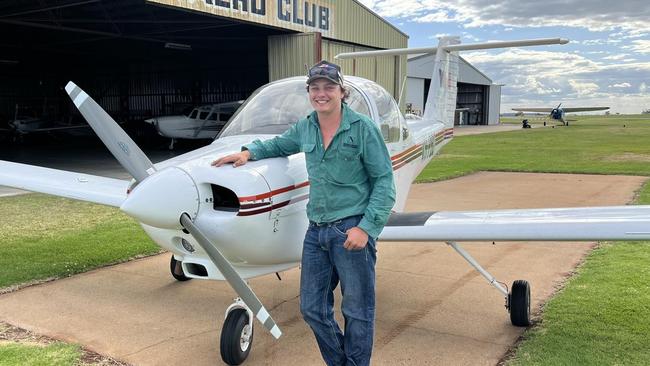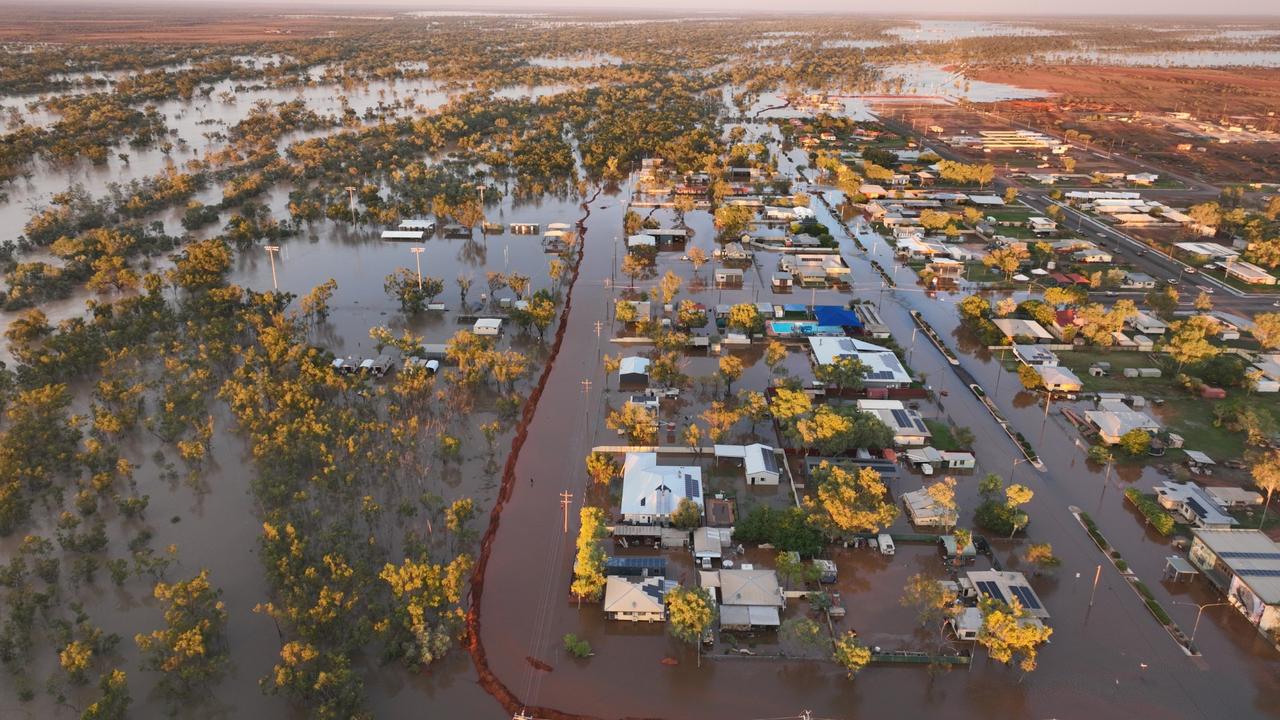Details of plane crash that killed, stockman and pregnant wife revealed in ATSB report
The Australian Transport Safety Bureau has stopped its investigation into the fatal plane crash that killed a Queensland stockman and his pregnant wife, with a report revealing details of the accident and what might have caused it.

QLD News
Don't miss out on the headlines from QLD News. Followed categories will be added to My News.
The Australian Transport Safety Bureau has stopped its investigation into the fatal plane crash that killed a stockman and his pregnant wife, citing the pilot was not qualified to fly the plane.
Rhiley Kuhrt, 22 , and his pregnant wife Maree, 24, died when their plane crashed at the Clarke Ranges during a storm on April 2.
Mr Kuhrt and his wife left the Natal Downs Station and were headed to the Lakeside Airpark, south of the Whitsundays, when the Piper Cherokee single-engine light aircraft crashed.
The wreckage was found on a steep slope at an elevation of 1913 feet, according to a report released by the ATSB on Tuesday.

The report said the flight departed in good conditions suitable for flight but the weather deteriorated as the aircraft approached the Clarke Ranges, which included significant low cloud, rain and thunderstorms, which led to reduced visibility.
“A discontinuation notice published today on the ATSB’s website notes the aircraft departed in good weather for visual flight, but flew into poor conditions, including low cloud around the Clarke Ranges, where the topography was substantially more rugged and elevated than the coastal or inland portions of the planned route,” the ATSB said on Tuesday.
“Evidence gathered from the accident site suggested the aircraft impacted the ground intact.
“A review of records established the pilot did not hold an aeroplane pilot’s licence (either a Recreational Pilot Licence or Private Pilot Licence) required to conduct the flight.”

The ATSB said records from the flying school showed Mr Kuhrt had completed 30.4 hours of flight instruction between November 2021 and November 2022 which included 2.9 hours on the Piper Cherokee.
“On that basis, the ATSB determined there was limited safety benefit in continuing to direct resources at this investigation when compared with other priorities,” the ATSB said.
The ATSB report said Mr Kuhrt had completed maintenance on the aircraft’s pitot-static mast in February to clear blockages.
“They did not hold an aircraft maintenance engineer licence or authorisation to perform or certify for maintenance on the aircraft,” the ATSB report said.
“This type of maintenance could lead to erroneous indications of the airspeed indicator, altimeter, and vertical speed indicator. It could not be determined if this contributed to the accident.”


The report said trees were damaged about 80m before the wreckage, with the damage shown to have an increasing angle down towards the wreckage.
The aircraft was inverted but it was unknown if it crashed that way or turned during the accident.
There was also minimal spread of the wreckage. The propeller was found intact and showed impact marks and bending consistent with the engine producing power at the time of impact.
“Consideration of these factors suggested that an in-flight break-up, engine failure or fuel exhaustion were unlikely to be contributory to the accident,” the report said.
“The relatively contained wreckage was representative of a low speed, high angle of attack impact with the ground.”

ATSB Chief Commissioner Angus Mitchell said licencing regulations administered by the Civil Aviation Safety Authority were designed to ensure pilots were properly trained and qualified to manage challenges “likely to be encountered during flying operation”.
“This includes training intended to teach pilots to identify and manage situations presented by adverse weather, both at the pre-flight planning phase and during flight,” Mr Mitchell said.
“When pilots operate outside the licensing regulations, they remove built-in safety defences.”
Mr Mitchell said there were still important safety lessons to be learned from the accident.
“This accident highlights the importance of following the standards for the operation and maintenance of aircraft to ensure the safety of flight, and further demonstrates that weather continues to remain one of the most significant causes of accidents in general aviation,” he said.
“The ATSB encourages all pilots, regardless of qualification or experience level, to develop the knowledge and skills required to avoid unintentional operations into adverse weather.”
In giving reasons for the discontinuation the ATSB said CASA had put in place regulations designed to ensure pilots were properly trained and qualified to manage challenges likely to be encountered during flying operations.
“This includes training intended to teach pilots to identify and manage situations presented by adverse weather, both at the pre-flight planning phase and during flight,” the report said.
“However, when pilots operate outside these rules, they remove the built-in safety defences. On that basis, the ATSB determined that there was limited safety benefit in continuing to direct resources at this investigation when compared with other priorities and elected to discontinue this investigation.”




